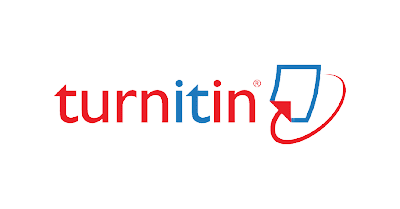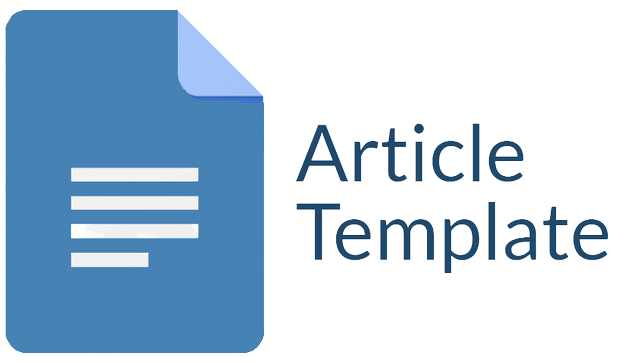ANALISIS BANTUAN LCD INTERACTIVE WHITEBOARD UNTUK MENINGKATKAN PEMBELAJARAN PADA PAUD HIBER KOTA BANDUNG
Abstract
This research is motivated by the development of Technology in the world of education, which with this development has become a challenge for the world of education, especially PAUD Hiber so that it can provide interesting, fun, interactive, and varied learning through the demands of the times in the digital era. Currently, many non-formal education institutions have emerged that have quite modern infrastructure, therefore this is a warning for formal early childhood education institutions to carry out various innovations in learning so that they can compete with non-formal institutions. In connection with this learning media being an important element in supporting the learning process in a varied, creative, and innovative way, to improve learning at Hiber PAUD in Bandung City, it is necessary to have facilities that support improving the quality of learning, so by providing this cinematic assistance it is hoped that it can be used to support the learning of young children. early so that learning is more interesting and interactive. This research aims to describe the strengths, weaknesses, opportunities, and threats of the Liquid Crystal Display Interactive Whiteboard cinematic assistance. The research location was carried out by the Bandung City Education Office, TK Assalam, and Kober Imanda. Using qualitative descriptive research methods. This research concludes that we can obtain an overview of the assistance of the Liquid Crystal Display (LCD) Interactive Whiteboard cinematic obtained through SWOT analysis.
Downloads
References
Aini, Yulia Isratul. 2021. “Pemanfaatan Rumah Belajar Pada Pembelajaran Di Masa Adaptasi Kebiasaan Baru.” Jurnal Teknodik: 81–93.
Amanda, Rizki Surya et al. 2022. “The Effect of Use Google Jamboard As Virtual Whiteboard In Online Learning On Kindergarten Student Motivation.” AWLADY: Jurnal Pendidikan Anak 8(1): 58–72.
Arikunto, Suharsimi. 2014. Prosedur Penelitian. 15th ed. Jakarta: PT. Rineka Cipta.
Dhieni, Nurbiana, Irma Yuliantina, Rahmitha Soendjojo, and Didik Tri Yuswanto. 2020. Panduan Penegerian Satuan Pendidikan Anak Usia Dini. 1st ed. Jakarta: Direktorat Pendiidikan Anak Usia Dini.
Fatmawati, Wahyu Sukartiningsih, and Titik Indarti. 2021. “Media Pembelajaran Audio Visual: Literature Review.” Pionir: Jurnal Pendidikan 10(1): 82–91.
Hartiyani, Selvi Dwi, Agung Prayogo, and Erlinawati Erlinawati. 2023. “Aplikasi Multimedia Pembelajaran Aksara Jawa Berbasis Android Untuk Siswa Sekolah Dasar.” EDUSAINTEK: Jurnal Pendidikan, Sains dan Teknologi 10(2): 679–93.
Hasan, Muhammad et al. 2021. Media Pembelajaran. 1st ed. Klaten: Tahta Media Group.
Hidayati, Umul. 2017. 15 Pendidikan Holistik Integratif Di Raudlatul Athfal (RA) Integrative Holistic Education At Raudlatul Athfal (RA). http://jurnaledukasikemenag.orgThisisanopenaccessarticleunderCC-BY-SAlicense.
Kurniasih, D., & Dkk. (2021). Teknik Analisis. Bandung: Alfabeta
Nadra, Evita. 2021. “Pengaruh Media Pembelajaran Online Berbasis Aplikasi Zoom Meeting Terhadap Resiliensi Akademik Mahasiswi Institut Ilmu Al-Quran (IIQ) Jakarta.”
Pratiwi, Ananda Mega, and Abdur Rohman. 2023. “Penerapan Strategi Digital Marketing Dalam Meningkatkan Omset Dengan Pendekatan Analisis Swot Perspektif Marketing Syariah Pada Toko Fihadaessie Surabaya.” Jesya 6(1): 881–98.
Rangkuti, Freddy. 2021. Analisis SWOT : Teknik Membedah Kasus Bisnis (Cara Perhitungan Bobot, Rating Dan OCAI). 22nd ed. Jakarta: PT Gramedia.
Soepriyanto, Yerry, and Anselmus J E Toenlioe. 2017. “Pengembangan Multimedia Interactive Whiteboard Untuk Anak Usia Dini Berlatih Motorik Halus Melalui Belajar Menulis Huruf.”
Sugiarto, Muhammad Agus. 2019. “Efektifitas Penggunaan Media LCD Dalam Memotivasi Belajar Peserta Didik.” Journal of Education and Instruction (JOEAI) 2(1): 1–7.
Sugiyono. 2015. Cara Mudah Menyusun Skripsi, Tesis Dan Disertasi. 3rd ed. Bandung: Alfabeta, cv.
Sugiyono. 2023. Metode Penelitian Kualitatif. 6th ed. Bandung: Alfabeta.
Supriani, Yuli, and Opan Arifudin. 2023. “Partisipasi Orang Tua Dalam Pendidikan Anak Usia Dini.” Jurnal Plamboyan Edu (JPE) 1(1): 95–105
Copyright (c) 2024 Rianti Garvita Sari, Ricky Yoseptry, Jelita Dewanty Hendarsyah, Lina Dalina

This work is licensed under a Creative Commons Attribution-ShareAlike 4.0 International License.
Jurnal allows anyone to compose, correct, and do derivative works, even for commercial purposes, as long as they credit for the original work. This license is the freest. It is recommended for maximum distribution and use of licensed material.
The submitted paper is assumed not to contain any proprietary materials that are not protected by patent rights or patent applications; The responsibility for technical content and protection of proprietary materials rests with the authors and their organizations and not the responsibility of journal or its editorial staff. The primary (first/appropriate) author is responsible for ensuring that the article has been viewed and approved by all other authors. The author's responsibility is to obtain all necessary copyright waivers to use any copyrighted material in the manuscript before submission.
Jurnal Pendidikan, Sains dan Teknologi allows the author(s) to hold the copyright without restrictions and allow the author(s) to retain publishing rights without restrictions. Jurnal Pendidikan, Sains dan Teknologi CC-BY-SA or an equivalent license as the optimal license for the publication, distribution, use, and reuse of scholarly work. Jurnal Pendidikan, Sains dan Teknologi allows the author(s) to hold the copyright without restrictions and allow the author(s) to retain publishing rights without restrictions. Jurnal Pendidikan, Sains dan Teknologi CC-BY-SA or an equivalent license as the optimal license for the publication, distribution, use, and reuse of scholarly work.
In developing strategy and setting priorities Jurnal Pendidikan, Sains dan Teknologi recognize that free access is better than priced access, libre access is better than free access, and libre under CC-BY-SA or the equivalent is better than libre under more restrictive open licenses. We should achieve what we can when we can. We should not delay achieving free in order to achieve libre, and we should not stop with free when we can achieve libre.
Jurnal Pendidikan, Sains dan Teknologi is licensed under a Creative Commons Attribution-ShareAlike 4.0 International License.
You are free to:
- Share a copy and redistribute the material in any medium or format
- Adapt a remix, transform, and build upon the material for any purpose, even commercially.
- The licensor cannot revoke these freedoms as long as you follow the license terms.






